Maintaining a gluten-free Mediterranean diet offers a wealth of health benefits, providing a balance of nutrient-rich foods, healthy fats, and plant-based proteins, while also focusing on the importance of whole food intake over processed options. The traditional Mediterranean diet, rich in fruits, vegetables, whole grains, and lean proteins, is often lauded for its cardiovascular benefits and potential to promote longevity.
However, adapting this diet to be gluten-free requires additional consideration, particularly when it comes to monitoring sodium intake, which can be a hidden concern in many processed gluten-free products.
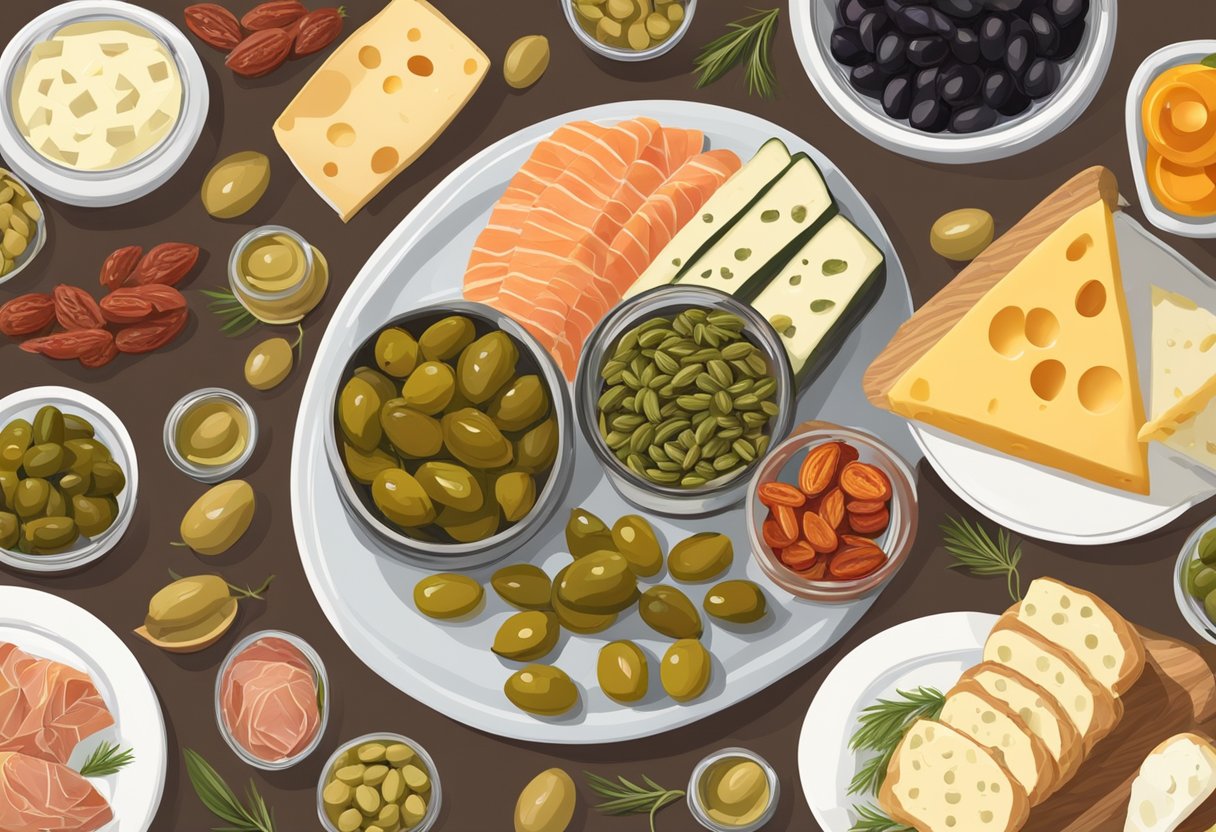
For individuals following a gluten-free diet, whether due to celiac disease or other health reasons, finding suitable salty snacks that align with the Mediterranean diet’s principles can be challenging. Gluten-free foods often contain added salt to enhance flavor, making it essential for consumers to read labels and understand the sodium content in their food choices.
While the Mediterranean diet includes moderate amounts of seafood and poultry, which naturally contain essential nutrients and are low in sodium, care should be taken in selecting processed gluten-free variants that might be high in added salt.
Key Takeaways
- A gluten-free Mediterranean diet emphasizes whole foods and healthy fats while minimizing processed items.
- Careful selection of salty snacks is necessary to maintain low sodium levels and align with the Mediterranean diet’s guidelines.
- Understanding nutritional labels is crucial for those on a gluten-free diet to avoid high-sodium food choices.
Table of Contents
Understanding Sodium and Salt in the Diet
Sodium plays a critical role in bodily functions, and salt is a primary source of this mineral in the diet. However, excess intake, particularly from processed foods, can lead to health risks such as high blood pressure and heart disease.
The Role of Sodium in the Body
Sodium is vital for maintaining normal cellular function, hydration, and electrical activity in the nervous system. It is one of several electrolytes in the body that help regulate fluid balance and blood pressure.
Sources of Dietary Sodium
Dietary sodium predominantly comes from salt (sodium chloride). While some is naturally found in food, most is added during processing. On a gluten-free Mediterranean diet, fresh fruits, vegetables, legumes, nuts, seeds, and fish are preferred—foods that are naturally low in sodium. However, it’s still important to check labels on packaged foods, even if they are gluten-free, as they can be saltier than expected.
Impacts of High Sodium on Health
High sodium consumption is directly linked with increased risks of high blood pressure, stroke, and heart disease. Symptoms like headaches and bloating can also be a result of a high-salt diet. People are often advised to consume less than 2,300 milligrams of sodium per day, yet many exceed this guideline due to the high sodium content in processed foods.
Evaluating Salt Intake
To monitor salt intake on a gluten-free Mediterranean diet, individuals should prefer home-cooked meals made with whole foods. When using packaged items, one should always read the label to check for sodium content, which should ideally be below 5% of the daily value per serving.
Product labels can help track sodium, with amounts expressed in milligrams. Knowing the recommended limits can guide better choices to maintain appropriate calorie and sodium levels in the diet.
Gluten-free Diet Basics
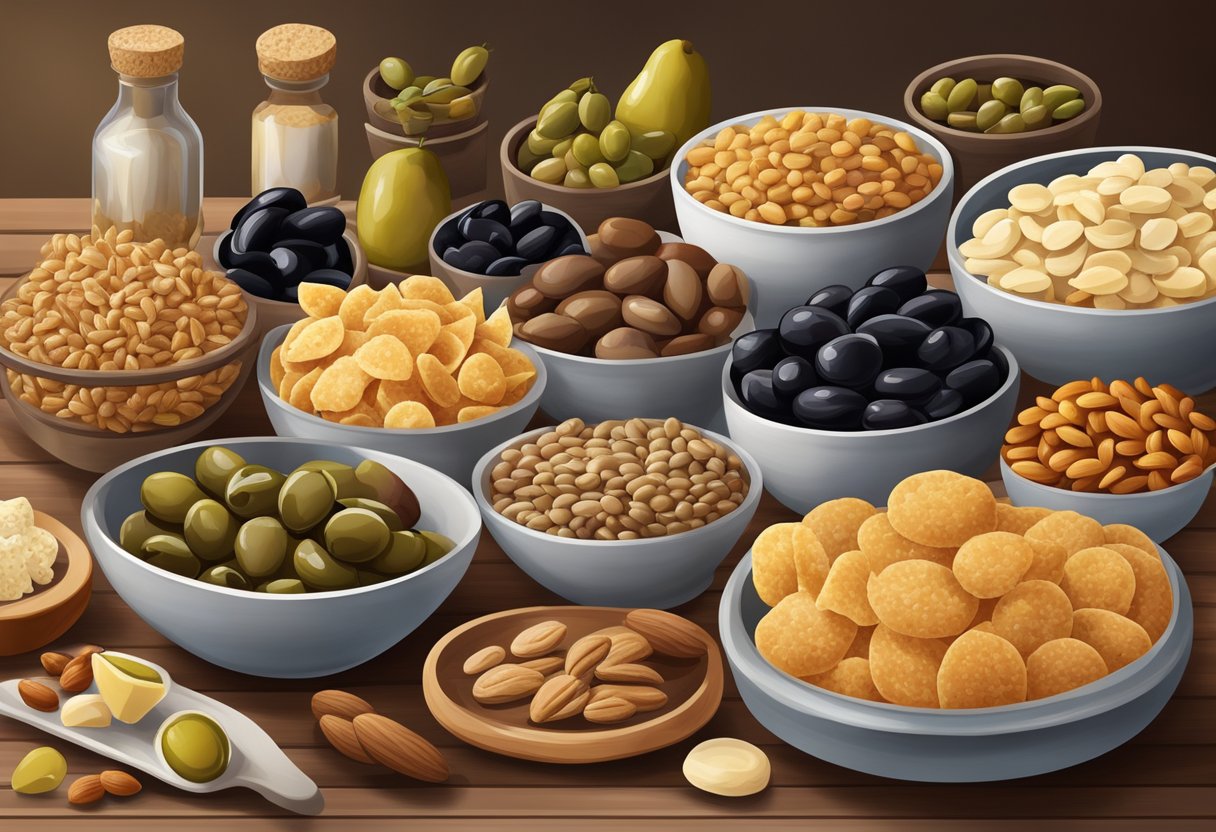
The gluten-free diet is an effective management tool for those with celiac disease or gluten intolerance, focusing on the exclusion of gluten to prevent health complications.
Understanding Gluten and Celiac Disease
Gluten is a protein found in grains such as wheat, barley, rye, and their derivatives. Celiac disease is an autoimmune disorder where the ingestion of gluten leads to damage in the small intestine. It is essential for individuals with celiac disease to adhere to a strict gluten-free diet to avoid this damage and associated symptoms.
Identifying Gluten-free Foods and Ingredients
Gluten-free foods are those that do not contain gluten or gluten-containing ingredients. These include naturally gluten-free grains like rice and corn, as well as soy, potatoes, and quinoa. When purchasing processed foods, one must read the labels carefully to ensure that the product is certified gluten-free. Some ingredients may contain hidden gluten, which can be found on labels under names like malt or hydrolyzed vegetable protein.
Challenges of Gluten-free Eating
Individuals on a gluten-free diet often face challenges, such as the risk of cross-contamination in restaurant food or when sharing a kitchen with gluten-containing products. Moreover, many gluten-free processed foods can be high in sodium, making it crucial to choose items wisely—especially within the context of a Mediterranean diet, which emphasizes low-sodium, nutritious foods. Another challenge is ensuring balanced nutrition, as some gluten-free foods lack certain nutrients found in their gluten-containing counterparts.
Mediterranean Diet Fundamentals
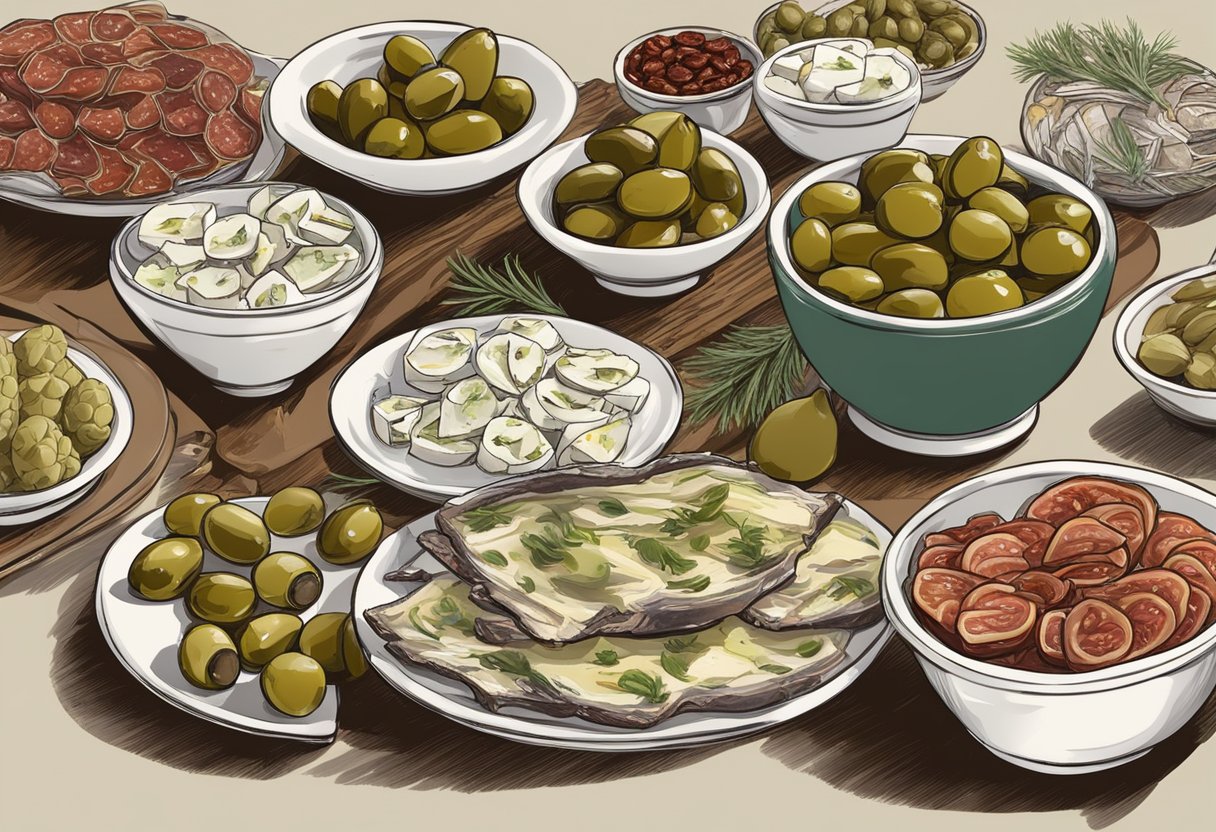
The Mediterranean Diet is distinguished by its emphasis on plant-based foods, heart-healthy fats, and whole grains. It incorporates a generous array of nutrition-rich options, including a variety of fruits, vegetables, and gluten-free whole grains.
Key Components of the Mediterranean Diet
- Vegetables and Fruits: Staples of every meal, providing essential vitamins, minerals, and fiber.
- Nuts and Seeds: Rich in antioxidants and healthy fats; they are consumed regularly but in moderation due to high calorie content.
- Olive Oil: The primary source of fat in the diet, olive oil is favored for its monounsaturated fats.
- Legumes: Include beans, lentils, and chickpeas; they are a key protein source and full of fiber.
- Whole Grains: In a gluten-free approach, options like quinoa and brown rice replace traditional wheat products.
- Fish: Especially fatty fish like salmon, which are high in omega-3 fatty acids, are recommended at least twice a week.
Health Benefits of the Mediterranean Diet
- Heart Health: The diet’s low intake of red meat and high intake of heart-healthy monounsaturated fats contribute to reduced risks of heart disease.
- Fiber and Nutrients: A diet high in fiber from fruits, vegetables, legumes, and gluten-free grains helps with digestion and overall health.
- Antioxidants: The emphasis on nuts, seeds, and olive oil provides antioxidants, which play a role in reducing inflammation and protecting against chronic diseases.
This gluten-free variant of the Mediterranean Diet maintains the traditional diet’s focus on natural, nutrient-dense foods while excluding gluten, enhancing its inclusivity for those with dietary restrictions.
Incorporating Salty Snacks and High-Sodium Foods
When following a gluten-free Mediterranean diet, one must be mindful in selecting salty snacks and high-sodium foods that align with the nutritional principles of the diet. The inclusion of such items should be approached with an understanding of their benefits and potential health impacts.
Selecting Snacks on the Mediterranean Diet
Choosing snacks consistent with the Mediterranean diet typically means selecting whole foods such as nuts, seeds, and vegetables. They are naturally gluten-free and offer beneficial nutrients. Olives and feta cheese, for example, provide a salty flavor while also supplying healthy fats and protein.
Gluten-free Salty Snack Alternatives
Gluten-free alternatives to traditionally processed snacks include popcorn and rice cakes, which can satisfy the craving for something salty. Homemade crackers made with whole grain flours such as almond or chickpea flour are excellent choices that also contribute valuable protein and fiber.
Understanding Labels and Sodium Content
Carefully reading labels is crucial to manage sodium content in the diet. Foods like canned vegetables and soup can be high in sodium, and the labels can provide insight into the sodium levels. Look for items labeled as ‘low sodium’ or ‘no salt added’ to make healthier selections.
Balancing Food Choices
When incorporating high-sodium foods, balance them with fruits and vegetables high in potassium, which can mitigate the potential impact on blood pressure. Including yogurt as a snack provides calcium and protein with less sodium, while pretzels or chips made from whole grains can be occasionally enjoyed in moderation.
Cooking and Meal Preparation
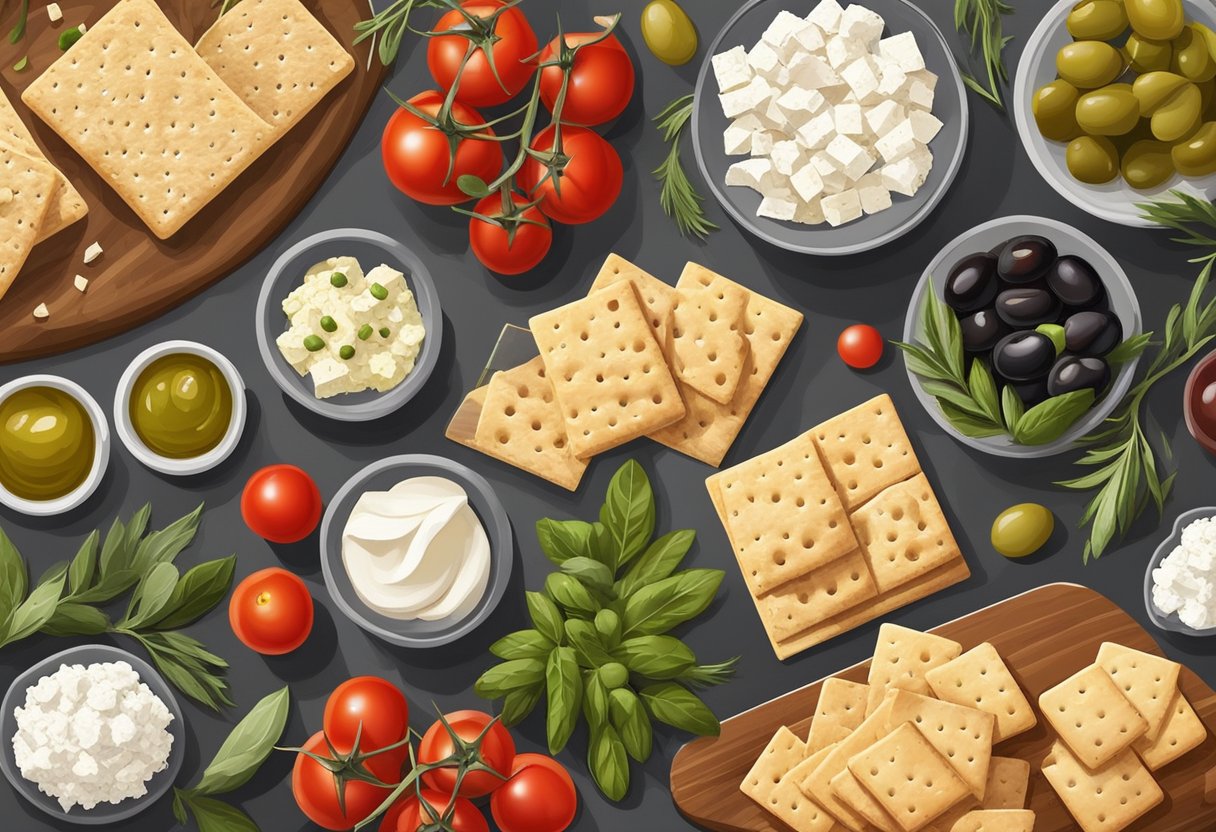
When adopting a gluten-free Mediterranean diet, one must focus on using whole foods and the proper preparation techniques to create meals that are both flavorful and nutritious. This approach emphasizes the importance of salt control and the inclusion of high-fiber, high-protein ingredients such as beans, vegetables, nuts, and seeds.
Gluten-free Mediterranean Recipes
Mediterranean cuisine offers an array of dishes that naturally fit into a gluten-free diet. For instance, Quinoa Tabbouleh replaces bulgur wheat with quinoa, a protein-packed seed, and combines it with fresh herbs, ripe tomatoes, and a lemony olive oil dressing for a refreshing salad. Another staple is Grilled Vegetable Platter, where vegetables like zucchini, bell peppers, and eggplants are lightly brushed with olive oil and herbs before grilling, highlighting the natural flavors without the need for excess sodium.
Healthy Cooking Techniques
Cooking methods play a pivotal role in the gluten-free Mediterranean diet. Steaming vegetables preserves their nutrients while avoiding the introduction of gluten, which can be a concern with some sauces. Roasting is another powerful technique; roasting chickpeas in the oven until they’re crispy can make for a satisfying, salty snack without the gluten. Similarly, baking fish with a drizzle of olive oil and a sprinkle of herbs provides a simple, high-protein meal that aligns with gluten-free guidelines.
DIY Gluten-free Salty Snacks
When it comes to snacks, preparation is key for those following a gluten-free Mediterranean diet. Homemade kale chips are a wonderful alternative to traditional snacks. Simply tear kale leaves, toss them with a small amount of olive oil and a pinch of sea salt, then bake until crisp. Another delightful option is a Mixed Nuts and Seeds blend, tossing almonds, pumpkin seeds, and sunflower seeds with a touch of sea salt and roasting them to bring out their natural flavors and crunch. These DIY snacks offer a dose of healthy fats, proteins, and the satisfaction of a salty snack without the gluten or excessive sodium.
Eating Out and Social Events

When adhering to a gluten-free Mediterranean diet, dining out and attending social events require careful menu choices to avoid gluten and manage sodium intake.
Choosing Gluten-free and Low-Sodium Options at Restaurants
One should be vigilant about verifying the gluten-free status of meals. Restaurants often offer options like grilled fish or chicken, which can be inherently low in sodium and suitable for a Mediterranean diet. Salads are a staple, but one must ensure that the salad dressing lacks both gluten and excess salt. It’s beneficial to inquire about the ingredients of soups, as they can often contain gluten in the form of thickeners, and also tend to be high in sodium.
Navigating Social Gatherings
At social events, the variety of foods presented can make sticking to a gluten-free and low-sodium diet a challenge. When options are unclear, opting for whole foods like fruits, vegetables, and nuts is safe. These items are natural fits for a Mediterranean diet and typically gluten-free and low in sodium. If sandwiches or pizza are being served, seek out those with gluten-free bread or crust and ask for minimal cheese and cured meats, both of which can increase the sodium content.
Tips for Reducing Sodium While Dining Out
To keep sodium levels in check, request for meals to be prepared without added salt and choose spices or herbs to flavor your food instead. It’s critical to read the nutrition label when available or ask the server for low-sodium options. Dishes that feature fresh produce and lean proteins, such as a grilled seafood salad, are often naturally lower in sodium and free from gluten-containing grains.
Supplemental Nutrition Information
Navigating the nutritional landscape of salty snacks and high-sodium foods requires an understanding of food labels and the role that certain nutrients play in a gluten-free Mediterranean diet. It’s also important to consider how supplements might fit into this dietary pattern to ensure adequate nutrition.
Understanding Food Labels
Food labels are crucial in managing a gluten-free Mediterranean diet, particularly when assessing the sodium content and checking for hidden sources of gluten. Consumers should look for the total amount of sodium per serving, ensuring it aligns with their daily goals. It’s also essential to scrutinize labels for terms like “salt,” “soda,” “sodium,” and “monosodium glutamate” (MSG), which indicate sodium presence. Likewise, to maintain a gluten-free diet, they must be vigilant about ingredients that contain gluten, often found in additives or preservatives. Added sugars should also be minimized, as they can appear in savory snacks, contributing to the total caloric intake without providing any beneficial nutrients.
Alternative Sources of Essential Nutrients
A gluten-free Mediterranean diet focuses heavily on whole foods, which inherently contain essential nutrients necessary for health. Individuals can find calcium in dairy replacements like fortified almond milk, while magnesium is abundant in nuts and seeds. Potassium can be increased through the consumption of fruits and vegetables like bananas and spinach. Legumes and leafy greens are good sources of folate, and whole grains — in their gluten-free versions — along with certain nuts are excellent for manganese intake. The emphasis is on natural, minimally processed foods to deliver a solid profile of vitamins and minerals.
The Role of Supplements in a Gluten-free Mediterranean Diet
Supplements may become necessary for individuals on a gluten-free Mediterranean diet to fill any nutritional gaps. They might require vitamin supplementation, especially for vitamin D, B12, and the minerals iron and zinc, which can be less accessible in a gluten-free diet. However, supplements should be chosen carefully, ensuring they are gluten-free and do not contain excessive sodium or other additives that could disrupt the dietary pattern’s integrity. A health professional’s guidance can support individuals in making informed decisions about supplements that align with their nutritional needs and Mediterranean diet principles.
Health Monitoring and Dietary Adjustments
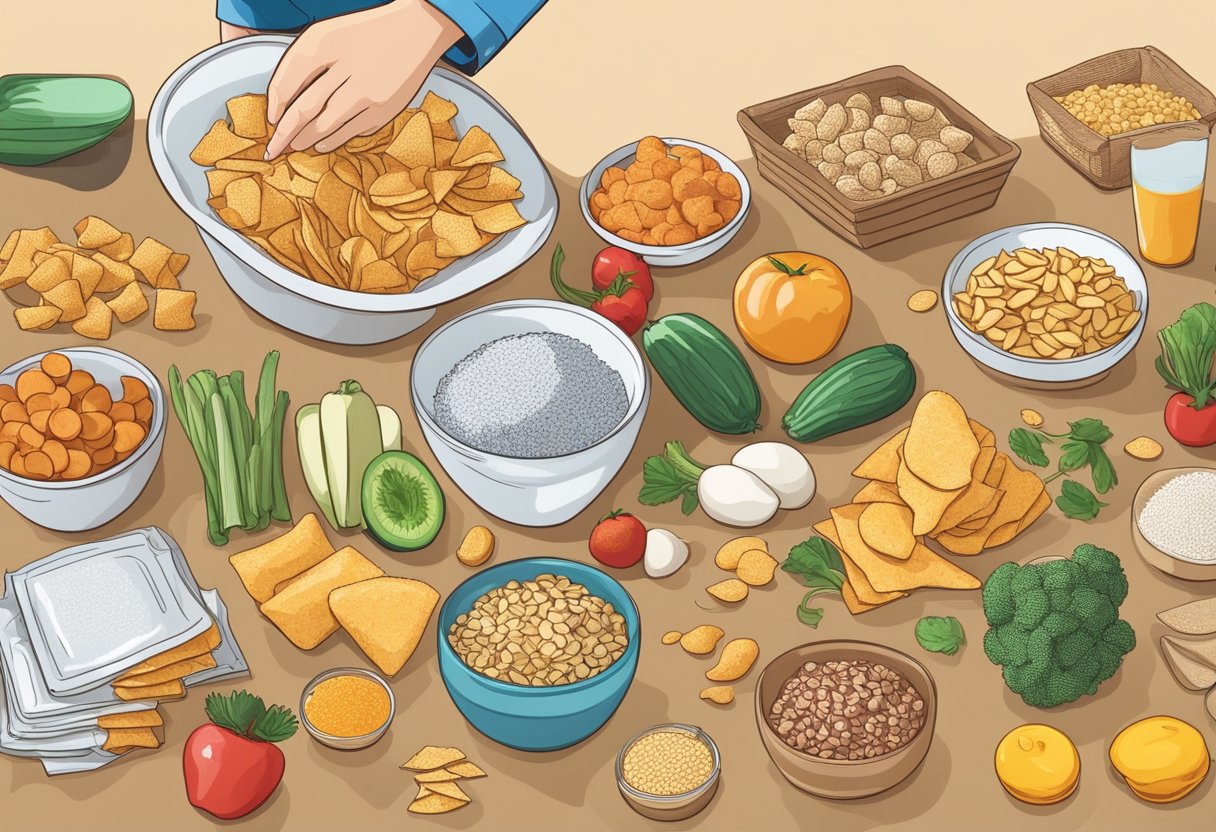
Adopting a gluten-free Mediterranean diet requires careful management of sodium intake and nutrient balance, especially given the risks associated with heart disease and high blood pressure. Monitoring one’s diet and making personalized adjustments are critical for maintaining optimal health and preventing nutrient deficiencies or electrolyte imbalances often connected with celiac disease.
Tracking Sodium and Nutrient Intake
Sodium, an essential electrolyte, requires regulation as excessive intake can lead to blood pressure issues and exacerbate heart disease. To maintain heart health on a gluten-free Mediterranean diet, individuals should track sodium consumption, aiming not to exceed the American Heart Association’s recommendation of 2,300 milligrams a day. This can be achieved by:
- Reading labels on packaged foods to identify hidden sodium sources.
- Using herbs and spices instead of salt to flavor dishes.
- Being mindful of high-sodium gluten-free substitutes, which can include certain breads or snacks.
In addition to sodium, tracking overall nutrition is pivotal. Nutrient-rich foods that align with the Mediterranean diet principles such as fruits, vegetables, nuts, seeds, lean proteins, and whole grains should be the focus. Tools and apps that log daily intake could be beneficial for those with celiac disease to confirm they are receiving a well-rounded array of essential nutrients.
Personalizing the Diet to Health Needs
Each individual’s health needs are unique, particularly when managing a gluten-free diet in conjunction with conditions like celiac disease or heart disease. Here are ways to personalize the diet:
- Consulting with a dietitian can guide adjustments ensuring nutrient requirements are met while managing sodium and gluten intake.
- Regular health check-ups, including blood pressure and cholesterol tests, can help assess the impact of dietary changes and signal when further adjustments are needed.
- Alternating sources of proteins and fibers from either plant-based or lean animal options can provide a balance that aligns with personalized health goals.
Frequently Asked Questions
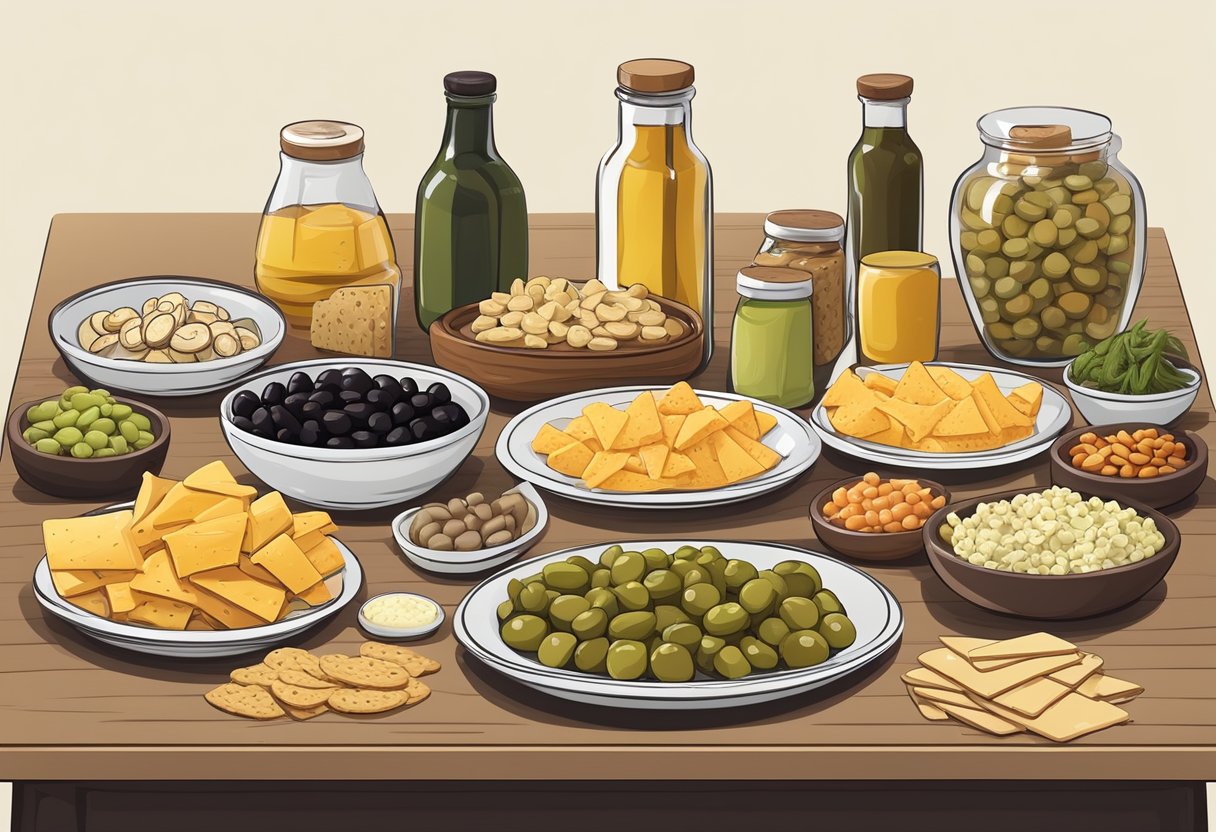
Adopting a gluten-free Mediterranean diet requires awareness and careful selection of foods to ensure nutritional adequacy while managing sodium intake and gluten sensitivity.
What types of snacks are considered appropriate when following a gluten-free Mediterranean diet?
Snacks typical to a gluten-free Mediterranean diet often include fruits, nuts, seeds, and vegetables. These gluten-free foods may have more salt, so careful label reading is advised.
Is it possible to maintain a low-sodium intake while adhering to a gluten-free Mediterranean diet?
It is possible to manage sodium levels by selecting less processed foods inherent to the Mediterranean diet such as fresh produce and by preparing homemade meals where salt can be controlled.
How can someone ensure their gluten-free diet is compatible with Mediterranean diet principles?
A gluten-free Mediterranean diet can be achieved by focusing on naturally gluten-free and plant-based foods such as fruits, vegetables, and legumes. These, combined with lean proteins and healthy fats like olive oil, create a varied and nutritious diet.
What ingredients should one include in a gluten-free Mediterranean diet shopping list?
The shopping list should include whole grains like quinoa and rice, fresh fruits and vegetables, nuts, seeds, legumes, fish, poultry, olive oil, and herbs. Aiming for variety will provide a broad spectrum of nutrients while staying true to both gluten-free and Mediterranean dietary practices.
Which high-protein snack options align with a gluten-free Mediterranean diet?
High-protein snacks that comply with this diet include Greek yogurt, nuts, seeds, hummus with vegetable sticks, and small portions of cheese. Seafood snacks such as smoked salmon can also be included occasionally.
Are there specific gluten-free recipes that also meet Mediterranean diet guidelines?
Numerous recipes meet both the gluten-free and Mediterranean diet guidelines, focusing on meals that include a plethora of vegetables, legumes, and healthy fats, with moderate amounts of lean protein from fish or poultry, and an abundance of fresh herbs and spices for seasoning.



